The Aircraft Structures Technician’s primary responsibilities include: assessing damage and corrosion of aircraft structures; repairing, replacing and modifying sheet metal and/or composite structures; and, depending upon the nature of the shop, repairing fabric surfaces and wood structures. These duties are completed with the use of sophisticated and specialized tools and equipment.
The technician brings to all tasks basic knowledge and experience in a variety of areas including: hand tool operation and maintenance, jig and fixtures construction, and the ability to install fasteners, seal structures and assemble parts. In addition, the structures technician in some shops may be asked to perform specialized work practices and processes such as the fabrication, repair and modification of fluid lines and fittings as well as the repair and replacement of windows and lenses.
This occupation is predominantly found in national and regional carriers, and specialty repair shops. For some companies, the duties of the aircraft structures technician overlap with the services performed by other specialty mechanics and technicians. This is particularly true of the tasks which relate to the specialized work practices.
Certification Requirements
To qualify for certification with CCAA, the applicant must possess the necessary knowledge and skills and have acquired a minimum of thirty-six (36) months in the occupation. The tasks in the logbook were made as generic as possible to accommodate the largest amount of work environments and equipment / tools but do not necessarily cover all tasks performed by individuals.
CCAA will apply credit for completion of a CCAA accredited Aircraft Structures Technician course, an approved Transport Canada course, or a Military (M0C 561) course as part of the minimum thirty-six (36) months, on a month to month basis up to a maximum of twelve (12) months.
This occupation has two (2) sub-occupations, Sheet Metal and Composites. Individuals will be required to complete different blocks of tasks based on their specific experience.
AME technicians holding a current S licence are exempt from completing the CCAA logbook but must send a copy of their Transport Canada licence (front and back) with their application, along with a resumé.
Tasks Common to Most Aircraft Structures Technicians
(note that sub-tasks for each task are not shown below)
Block A — Safety
Task 1 – Demonstrates Safe Working Practices and Techniques
Block B — Basic Knowledge and Experience
Task 2 – Accesses Reference Material and Documents Work Completed
Task 3 – Selects, Operates and Maintains Hand, Power and Measuring Tools
Task 4 – Treats Metals and Corrosion
Task 5 – Constructs / Sets up Jigs and Fixtures
Task 6 – Seals Structures
Task 7 – Installs Fasteners
Task 8 – Assesses Corrosion to Aircraft Structures
Task 9 – Assesses Damage to Aircraft Structures
Task 10 – Assembles and Fits Parts
Block C — Sheet Metal Structures
Task 11 – Repairs / Replaces / Modifies Metal Alloy Structures
Task 12 – Fabricates Sheer Metal Parts
Block D — Composite Structures
Task 13 – Repairs / Modifies Composite Structures
Task 14 – Fabricates Composite Parts
Block E — Fabric and Wood Repair
Task 15 – Recovers / Repairs Fabric Surfaces
Task 16 – Inspects / Repairs Wood Structures
Block F — Specialized Work Practices and Processes
Task 17 – Fabricates / Repairs / Modifies Fluid Lines, Conduits and Fittings
Task 18 – Repairs / Replaces Windows and Lenses
